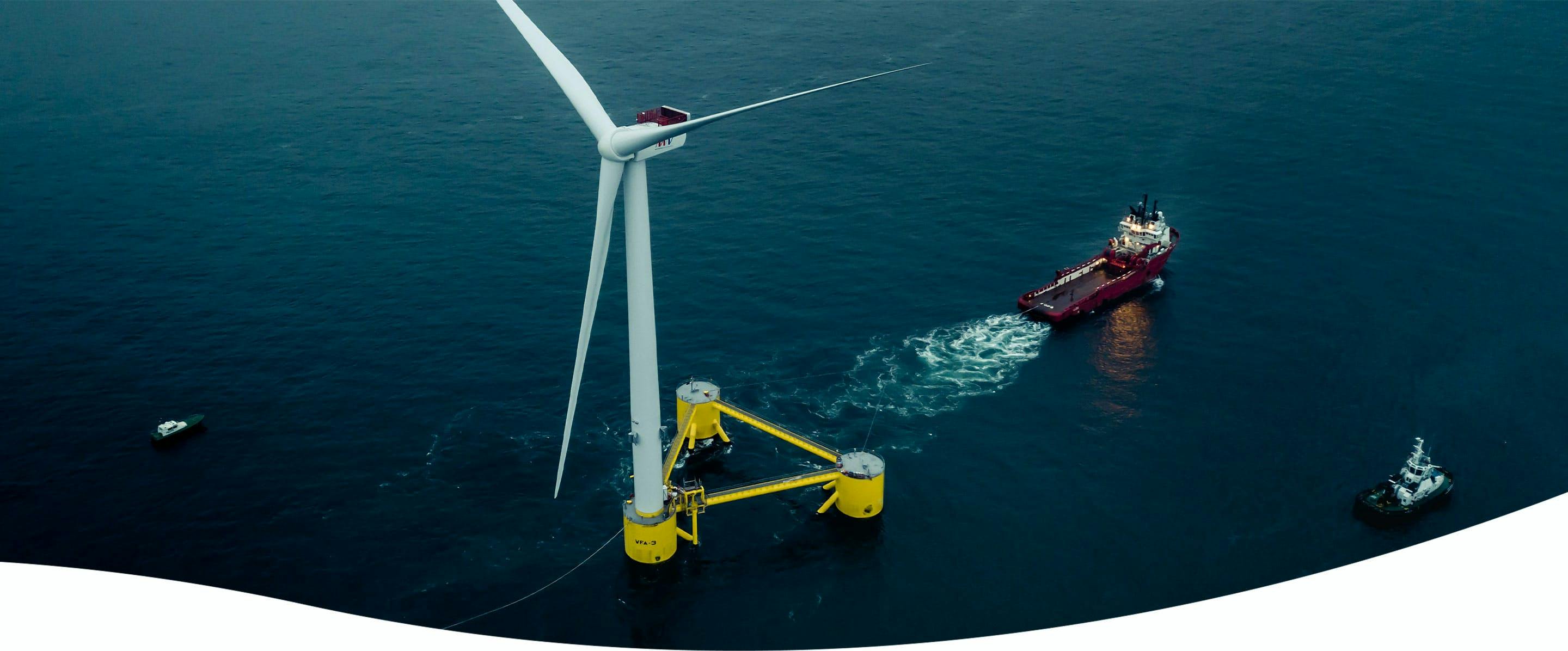
A paradigm shift in offshore installation
The WindFloat® system represents a paradigm shift in offshore wind installation, since its inherent stability and low draft permits most installation to be performed quayside in a protected environment.
The WindFloat® utilizes readily available onshore port infrastructure to perform all heavy lifting required for wind turbine installation and maintenance, eliminating the need for specialized and expensive heavy lift vessels and removing a considerable source of cost and risk from the project.
Once completed, the platform is inherently stable and seaworthy meaning that a simple offshore tug is enough to tow the platform to its final location where it is connected to its preinstalled mooring system.
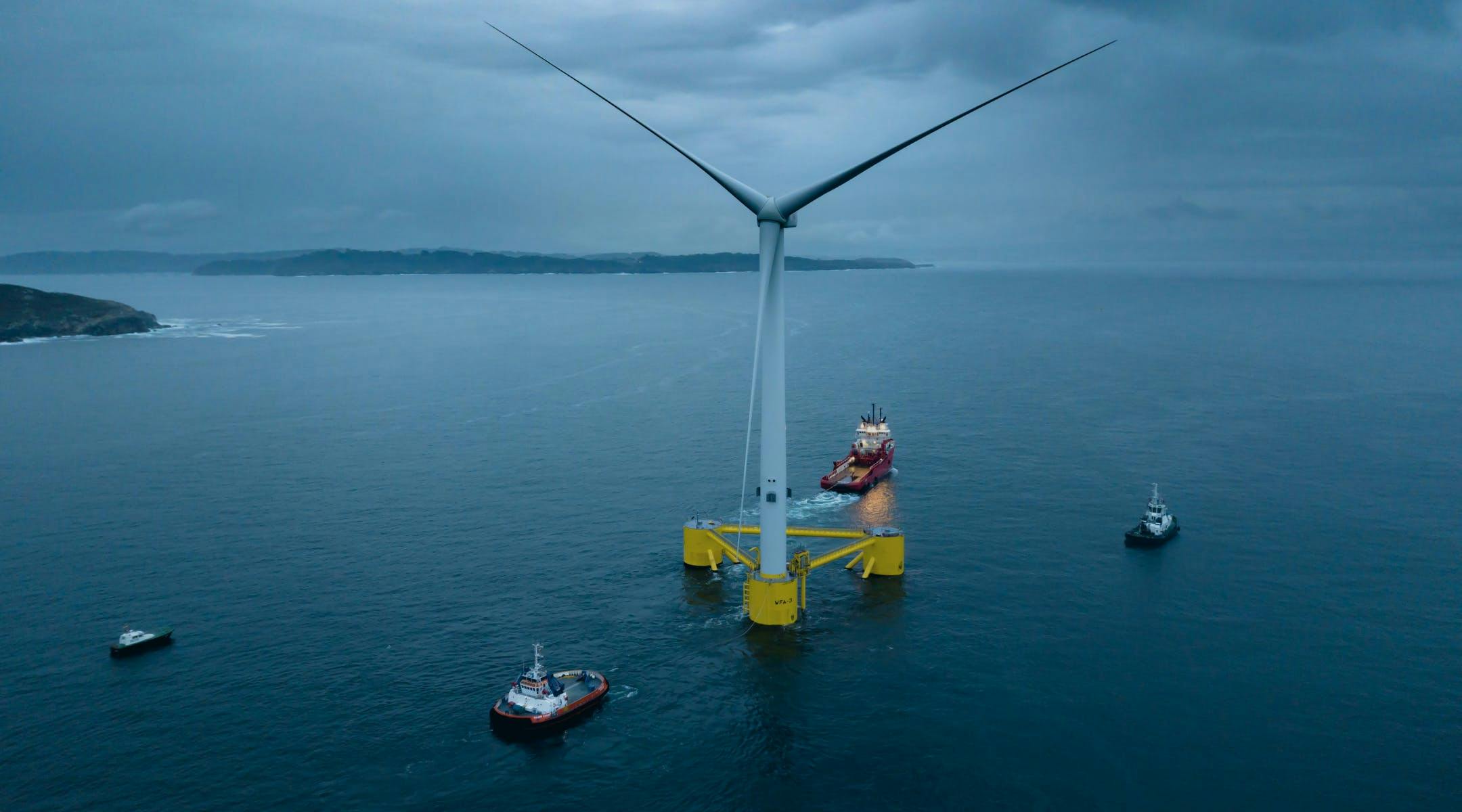
Standard mooring and anchors
The WindFloat® is inherently stable and its hydrodynamic performance is tuned through a multitude of design variables, such as the configuration and sizing of the damping plates, so that the mooring system is only used for station-keeping.
The preferred solution for intermediate water depths is a simple and inexpensive three- to four-line catenary mooring configuration that minimizes footprint.
Low pretension and low anchor capacity requirements minimize installation complexity and vessel needs.
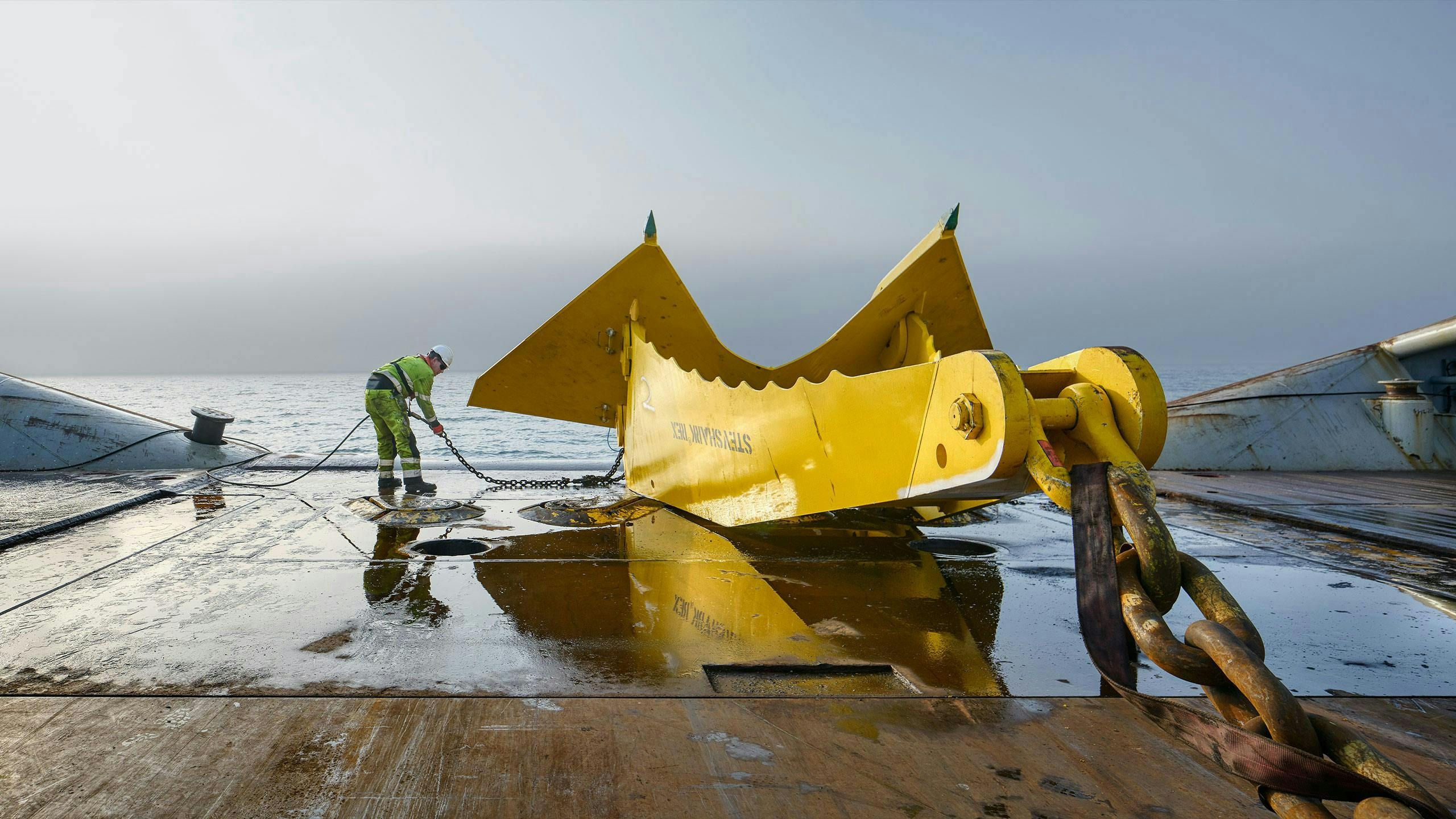
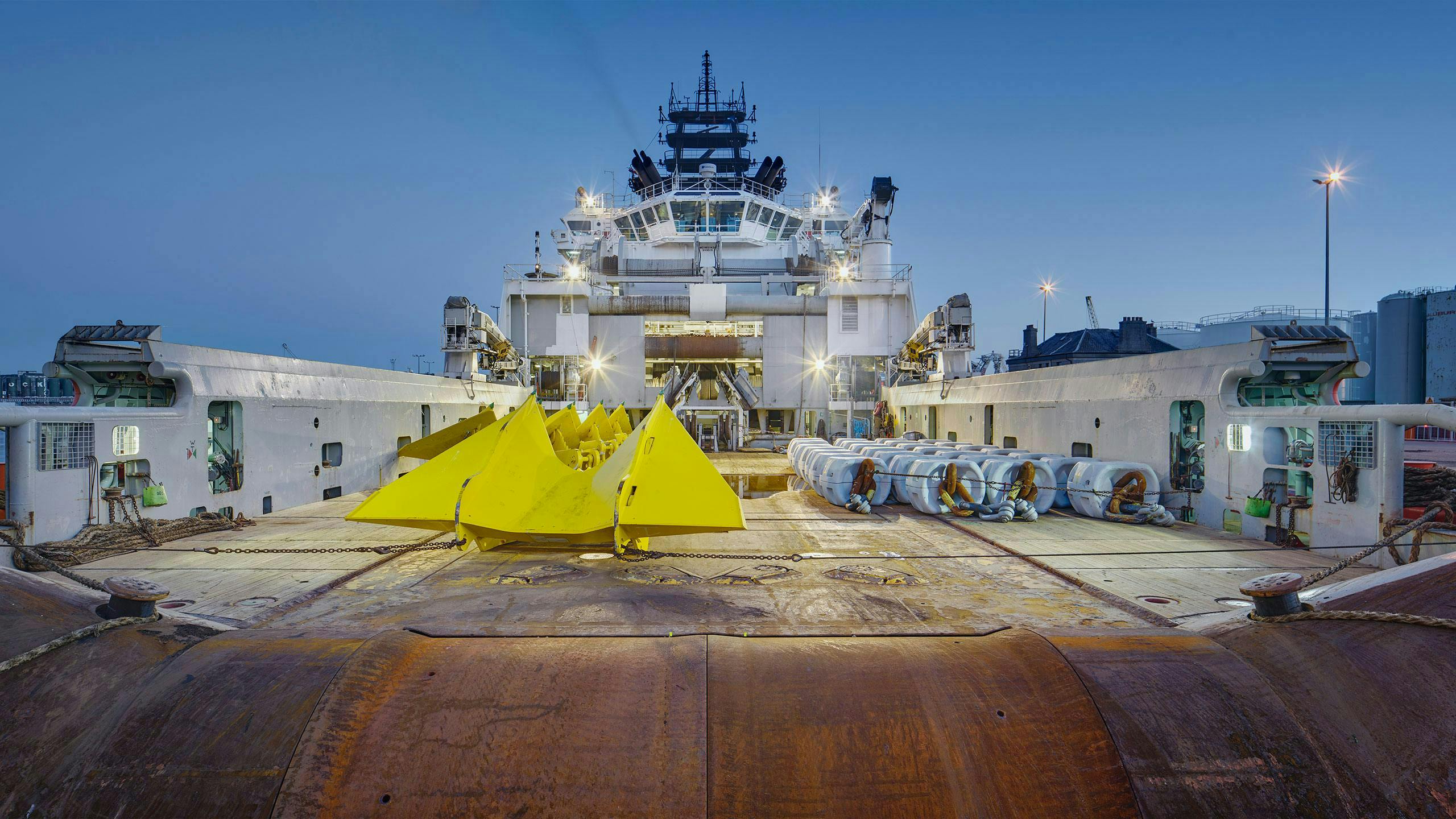
Flexibility to accomodate a range of site conditions
The WindFloat® mooring system is similar to those on oil & gas platforms and uses conventional mooring components that are commodity-priced and readily available worldwide.
The mooring system is flexible and can be adapted to a variety of water depths and seabed types with incremental changes in cost, offering project sponsors considerable siting flexibility. The system is pre-installed on site using widely available, affordable vessels using methods with proven track records, removing such operation from the critical path of construction, reducing schedule risk.
Innovative mooring solutions
Find out how we are pushing the boundaries of mooring systems with the ShallowFloat and DeepFarm projects.
Turbine installation and commissioning at quayside
Both WindFloat products – WindFloat T and WindFloat F - are designed with a shallow draft structure that allows turbine installation at most ports. However, the WindFloat F offers ultra-shallow wind turbine integration in ports as shallow as 9 meters.
The WindFloat® adjustable draft enables turbine installation to be performed at quayside with readily available onshore cranes, eliminating the need for expensive heavy-lift vessels during construction and operation. The three-column design means that the wind turbine can be positioned adjacent to the quay, minimizing crane outreach requirements (<20 m) in comparison to systems where the wind turbine is centrally located (40+ m).
The WindFloat® installation concept has tremendous benefits over conventional offshore wind and other floating offshore wind technologies. The ability to perform all heavy lifts and pre-commissioning of the system onshore in a protected environment dramatically reduces the activities that need to be performed offshore. This reduces exposure to inclement weather and represents a major benefit for personnel safety, while also minimizing cost and risks.
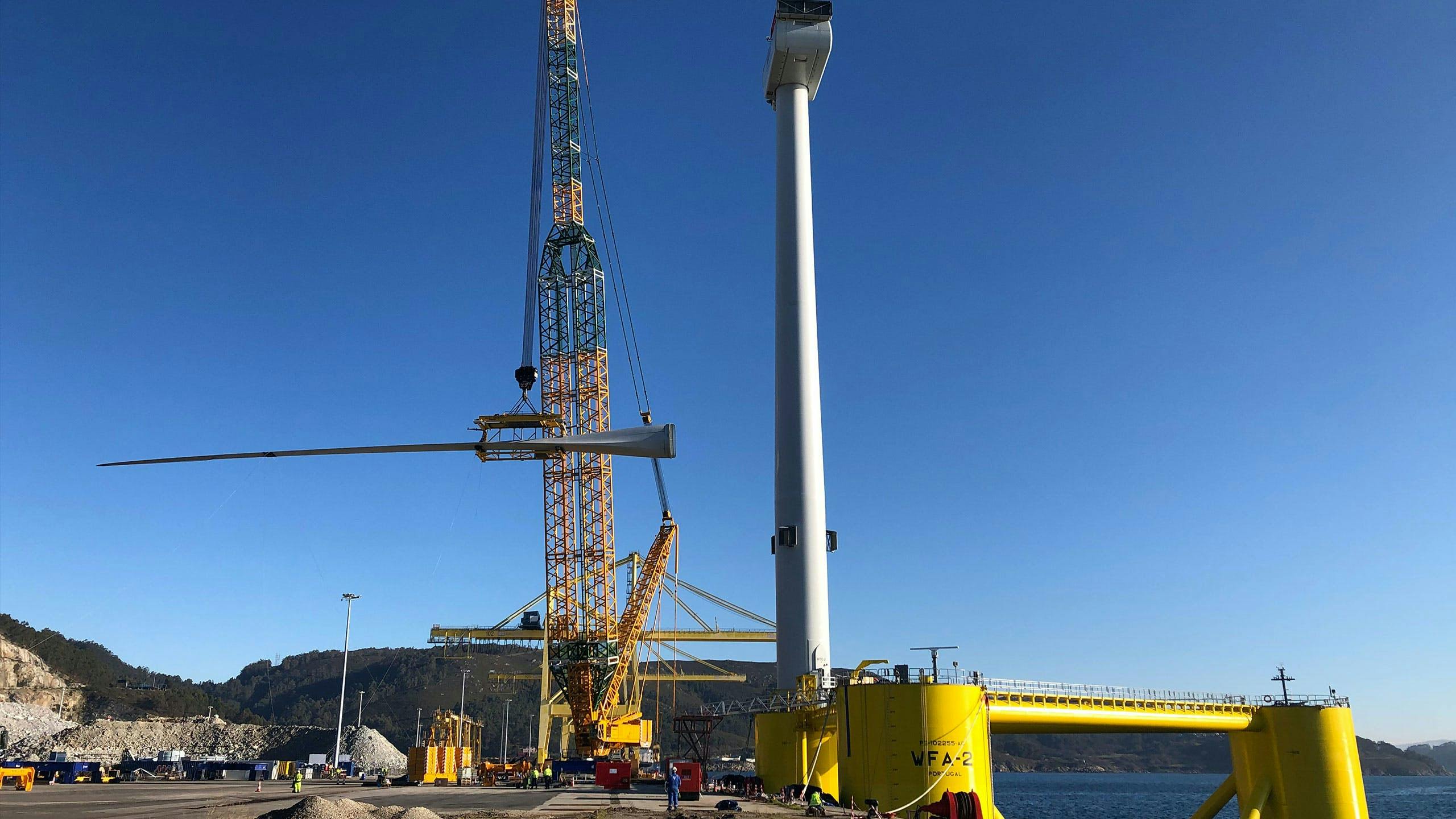

Tow-out and hook-up
The WindFloat® product portfolio is inherently stable in transit, providing a safe and cost-effective solution for installation. After the coupled wind turbine and WindFloat® system has been pre-commissioned in port, it is connected to a standard offshore tug, which are widely available worldwide, and towed to the offshore site.
Once the WindFloat® unit is positioned on location, each of the mooring lines are pulled in, secured, and attached to the plug-n-play platform mooring connectors. Inter-array cables are then pulled into Principle Power’s patented I‐tube.
Cost savings are significant when compared with bottom-fixed foundations and other floating technologies, such as spars or TLPs, which require offshore heavy-lift operations with specialized and expensive installation vessels and complicated, weather-sensitive floating-to-floating lifting operations.
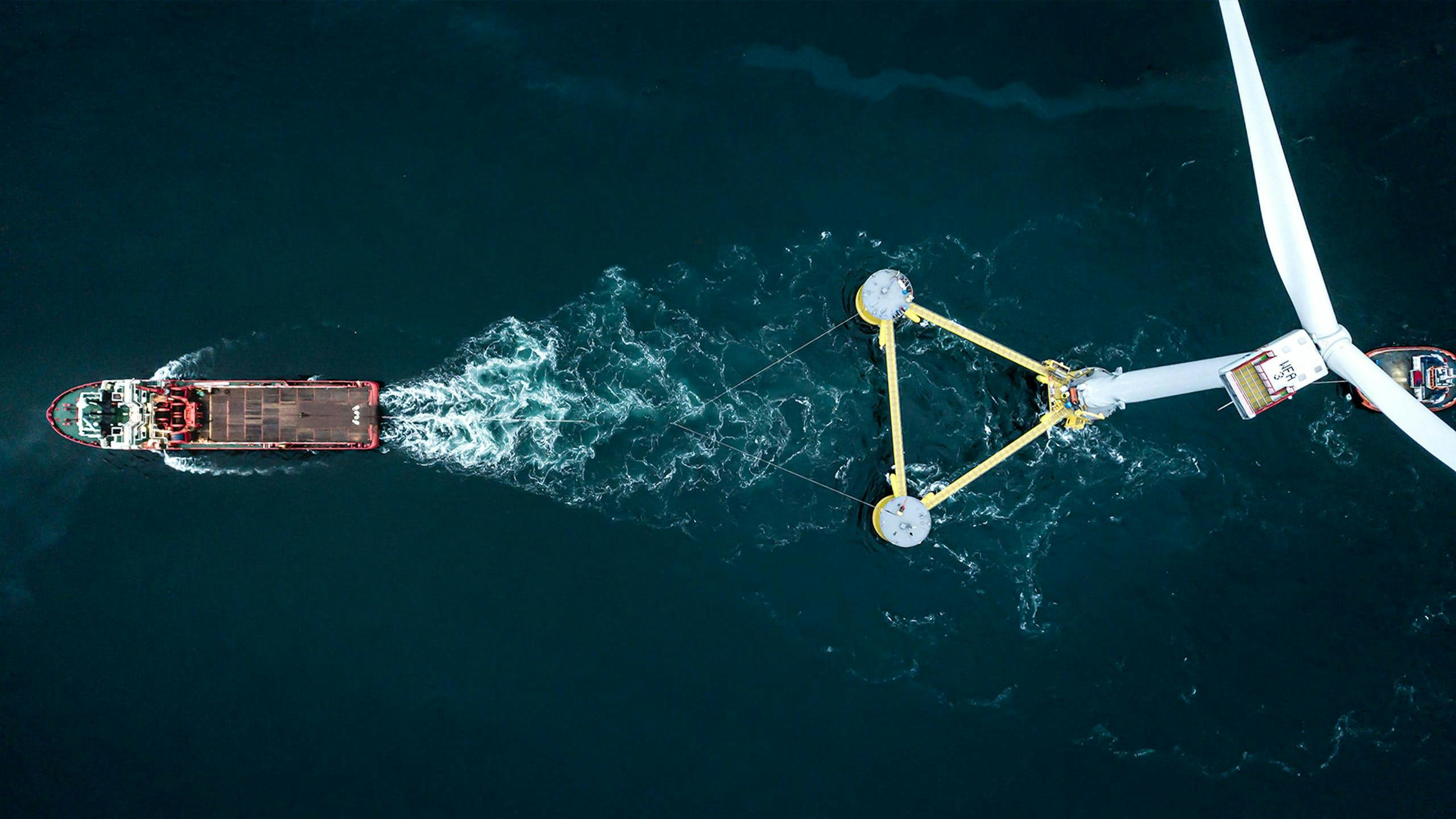

Let's get your project floating
Contact our expert team to learn about how we can support your floating wind project.
The WindFloat® advantage
PerformanceFabricationInstallationInspection, Maintenance & RepairConnectionLocal CommunitiesEnvironmentServices
Project Development SupportConcept and Pre-FEED DesignFEED and Detailed DesignProject Execution SupportInspect, Maintain & RepairEnd of Life Services


